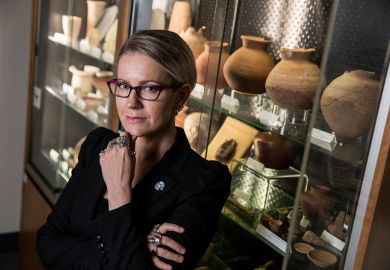Australia’s government has kept faith with its health researchers by depositing a promised A$7.83 billion (£4.33 billion) into the Medical Research Future Fund (MRFF).
The massive money transfer propels the MRFF well towards its A$20 billion target, which would make it the world’s biggest sovereign future fund for medical research and the single largest boost to health research funding in Australia’s history.
The cash injection also dispels fears that a lack of clarity about allocations from the fund could reflect a lack of political resolve to finance it.
The Association of Australian Medical Research Institutes (AAMRI) said the top-up was itself the largest single investment in Australian medical research. The association said the MRFF was “on track” to be fully funded by its 2020-21 deadline, with the balance now sitting at an estimated A$17.5 billion.
AAMRI president-elect Jonathan Carapetis said that, by honouring its funding commitments, the government was allowing medical researchers to plan with confidence. He said the MRFF was unique in having been set up to fund both research and its application.
“This means getting treatments to patients faster and more effectively, and making sure new approaches to prevention are put into practice,” he said.
Professor Carapetis, a professor at the University of Western Australia, said the MRFF was already funding research with the potential “to deliver significant health benefits for the nation well into the future”.
If researchers were nervous about the government’s intent to bankroll the MRFF, history suggests that their fears were justified. The last major nest egg set up to support research, the A$6 billion Higher Education Endowment Fund (HEEF) initiated by a Coalition government last decade, fell victim to economic upheaval and political gamesmanship.
The Rudd Labor government rebadged the HEEF as the Education Investment Fund (EIF) and promised to increase it to A$11 billion. But the 2008 downturn in the global economy scuttled these plans, with the top-ups failing to materialise and the fund’s capital depleted supporting economic stimulus activities – some of which had little to do with research.
The EIF’s remaining A$3.9 billion has lain dormant for several years, as the government attempts to fold it into other funds.
While the MRRF appears likely to avoid such a fate, its rollout risks further skewing Australia’s research effort into the medical arena at the expense of other disciplines – particularly the cash-starved humanities and social sciences (HASS).
In last year’s research assessment exercise, Excellence in Research for Australia, medical and health sciences attracted well over twice the research income of all 11 broad HASS fields combined.
In early May the Australian Academy of the Humanities lodged a pre-election plea for an independent review of HASS research funding and an arts advocacy equivalent to Australia’s chief scientist – appeals that have so far fallen on deaf ears.
Register to continue
Why register?
- Registration is free and only takes a moment
- Once registered, you can read 3 articles a month
- Sign up for our newsletter
Subscribe
Or subscribe for unlimited access to:
- Unlimited access to news, views, insights & reviews
- Digital editions
- Digital access to THE’s university and college rankings analysis
Already registered or a current subscriber?








